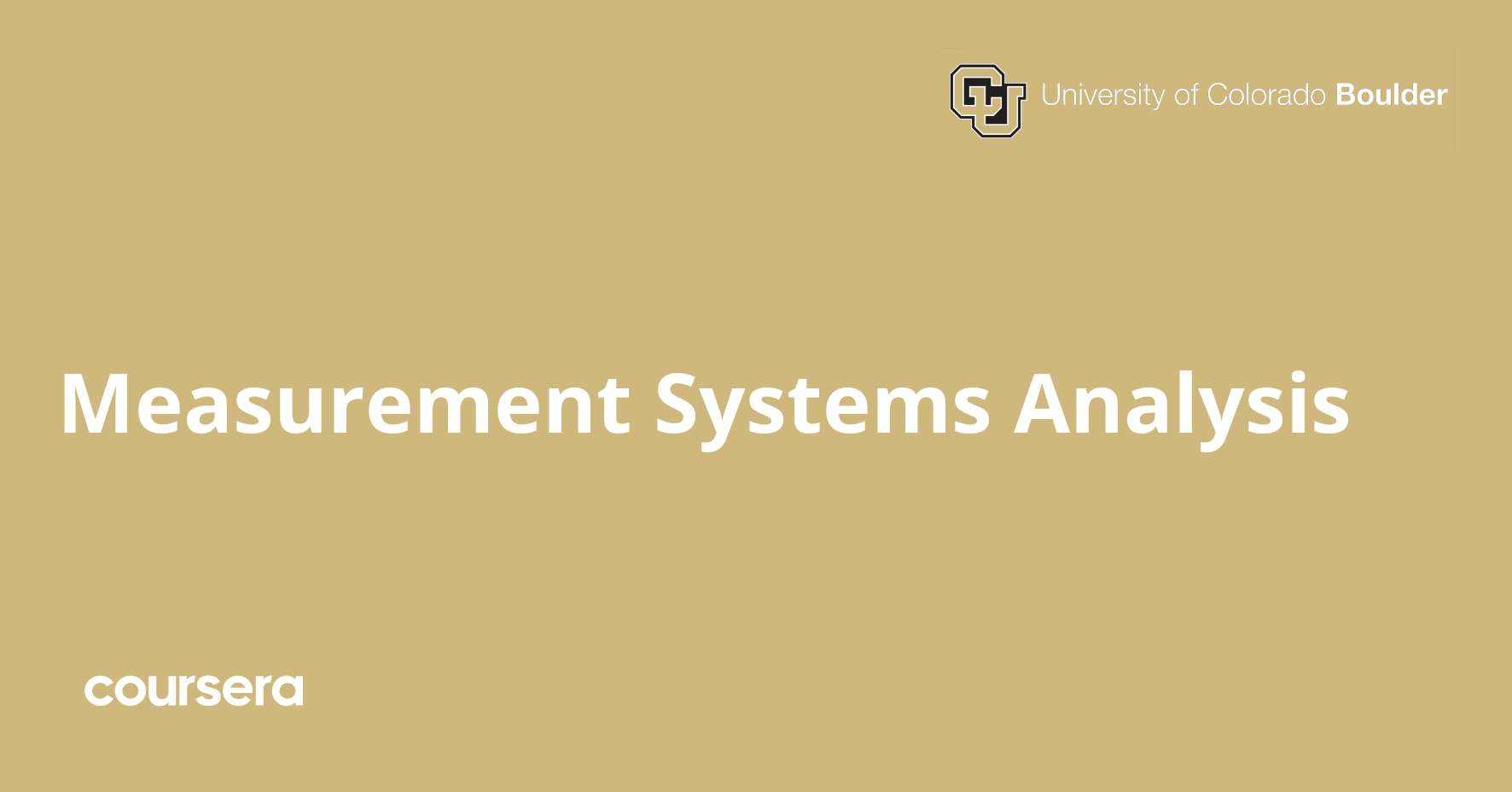Description
In this course, you will learn to analyze measurement systems for process stability and capability and why having a stable measurement process is imperative prior to performing any statistical analysis. You will analyze continuous measurement systems and statistically characterize both accuracy and precision using R software. You will perform measurement systems analysis for potential, short-term and long-term statistical control and capability. Additionally, you will learn how to assess a discrete measurement and perform analyses for internal consistency, concordance between assessors, and concordance with a standard. Finally, you will learn how to make decisions on measurement systems process improvement.
This specialization can be taken for academic credit as part of CU Boulder’s Master of Science in Data Science (MS-DS) degree offered on the Coursera platform. The MS-DS is an interdisciplinary degree that brings together faculty from CU Boulder’s departments of Applied Mathematics, Computer Science, Information Science, and others. With performance-based admissions and no application process, the MS-DS is ideal for individuals with a broad range of undergraduate education and/or professional experience in computer science, information science, mathematics, and statistics. Learn more about the MS-DS program at https://www.coursera.org/degrees/master-of-science-data-science-boulder.
What you will learn
Correlation and Association
In this module, we will learn to identify, characterize and analyze relationships between two variables. We will first learn about correlation between two continuous variables and tests for significance. Next, we will learn about correlation for ordinal variables, and association for one nominal and one continuous variable. Finally, we will learn to assess relationship for two nominal variables.
The One Way Analysis of Variance (ANOVA) for Fixed and Random Effects
In this module, we will perform an Analysis of Variance for Fixed and Random Effects for a single factor and interpret results. We will first examine within versus between-group variation, and interpret the ANOVA source table. We will learn how to perform the ANOVA with Fixed Effects for means and dispersion, considering normality and equal/unequal variance. We’ll create data visualizations of results, calculate statistical importance and perform post hoc analysis. Finally, we’ll perform the ANOVA with Random Effects.
Introduction to Measurement Systems Analysis for Continuous Data, Potential Studies for Continuous Data
In this module, we will understand the terms and concepts associated with measurement systems analysis and analyze measurement error to determine the potential capability of a measurement system. We will explore the guidelines for measurement systems analyses and the equations for measurement error and capability. We will then calculate the sources of variation from the ANOVA determine the largest sources of variation, and determine capability in comparison to both process variation and specification tolerance. Finally, we’ll create data visualizations, and interpret the results of the analysis.
Short Term and Long Term Studies for Continuous Data
In this module, we will analyze measurement error to determine the short and long-term capability of a measurement system. We will build on what we have learned in the previous module, adding the evaluation of the underlying assumptions of normality, independence of part size/magnitude and measurement error, and stability of measurement error. We’ll perform an ANOVA to determine sources of variation along with the determination of gauge discrimination. Finally, we’ll create data visualizations, and interpret the results of the analysis.






